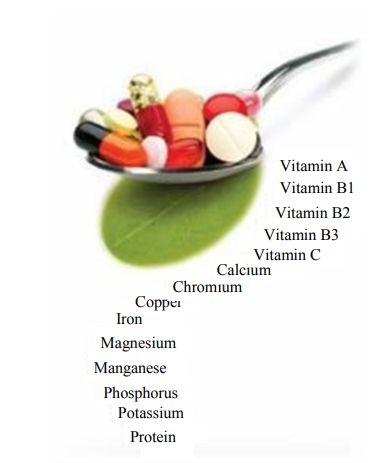The Johns Hopkins School Research on Moringa

Jed W. Fahey, Sc.D. , Johns Hopkins School of Medicine, Department of Pharmacology and Molecular Sciences
produced a very important research paper titled: “Moringa oleifera: A Review of the Medical Evidence for Its Nutritional, Therapeutic, and Prophylactic Properties. Part 1.” In this seminal work, they began the process of sifting through the scientific work on Moringa, as well as the traditional, as well as anecdotal evidence for Moringa’s nutritional, therapeutic and that much of the scientific evidence is beginning to support much of the traditional and anecdotal information. I will first present some of the traditional information on the use of Moringa in treating various diseases and maladies.
Below are quotes as well as a chart given in the Johns Hopkins research paper
on the scientific evidence regarding Moringa’s nutritional value, as well as it’s
Medicinal properties.


Rhamnose & Phytochemicals –Phytochemicals are chemical compounds produced by plants through interaction with the sun (photosynthesis) and which have an effect on health and healing.


Antibacterial and Antifungal: Subsequent elegant and very thorough work, published in 1964 as a PhD thesis by Bennie Badgett (a student of the well known chemist Martin Ettlinger), identified a number of glyosylated derivatives of benzyl isothiocyanate [5] (e.g. compounds
containing the 6-carbon simple sugar, rhamnose) (8). The identity of these compounds was not available in the
referred scientific literature until “re-discovered” 15 years later by Kjaer and co-workers (73). Seminal reports on the antibiotic activity of the primary rhamnosylated compound then followed, from U Eilert and colleagues in
Braunschweig, Germany (33, 34). They re-isolated and confirmed the identity of 4-(α-L-rhamnopy-ranosyloxy)benzyl glucosinolate [6] and its cognate isothiocyanate [2] and verified the activity of the latter compound against a wide range of bacteria and fungi. (Jed W. Fahey, 2005)
This is clearly the area in which the preponderance of evidence—both classical scientific and extensive anecdotal evidence—is overwhelming. The scientific evidence has now been available for over 50 years, although much of it is completely unknown to western scientists.
H. pylori is an omnipresent pathogen of human beings in medically underserved areas of the world, and amongst the poorest of poor populations worldwide. It is a major cause of gastritis, and of gastric and duodenal ulcers, and it is a major risk factor for gastric cancer (having been classified as a carcinogen by the W.H.O. in 1993). Cultures of H. pylori, it
turned out, were extraordinarily susceptible to [2], and to a number of other isothiocyanates (37, 60). These compounds had antibiotic activity against H.pylori at concentrations up to 1000-fold lower than those which had been used in earlier studies against a wide range of bacteria and fungi. The extension of this finding to human H. pylori infection is now being pursued in the clinic, and the prototypical isothiocyanate has already demonstrated some efficacy in pilot studies. (Jed W. Fahey, 2005)
credit: Jed W. Fahey, Sc.D. , Johns Hopkins School of Medicine, Department of Pharmacology and Molecular Sciences